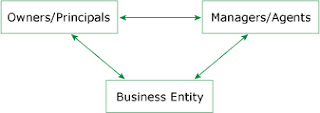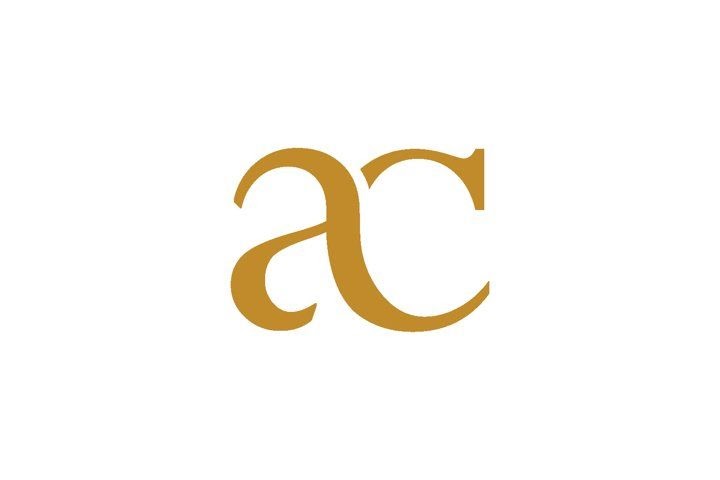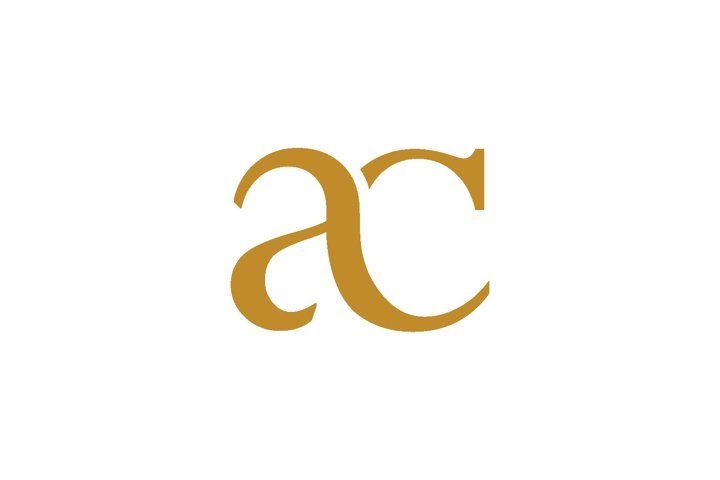Ticker
Assets and liabilities
As the income statement groups together like items of income and deducts like items of costs to show a profit or loss for an accounting period, the balance sheet also groups together like items to show the financial position of an entity at the end of its accounting period. It is rather like a ‘snapshot’ of the entity at that moment in time. Determining a financial position is something that individual people frequently do as well, and involves sorting out what, as a person, you own and what is of value to you, often in terms of money and things like houses, cars, jewellery, furniture, etc. These types of things are called assets and the term means much the same in an accounting context as well. Determining a financial position also involves sorting out what, as a person, you might owe to other people – by way of things like mortgages, loans, credit card bills, unpaid bills for utilities, etc. These are called liabilities . If the value of your assets exceeds your liabilities, you could (in theory, at least) sell your assets, realise cash and settle your liabilities. Assets and liabilities have been carefully defined by the International Accounting Standards Board (IASB). Assets are resources controlled by a business as a result of past events and from which future economic benefits are expected to flow to the business. They might be things the business owns, like machinery. Businesses try to establish a financial position in a similar way at the end of an accounting period. They may have various assets, such as land and buildings, plant and machinery and vehicles, which they use to carry out business, manufacture goods and deliver them, and which they intend to keep for a long time. These are referred to as non-current assets or fixed assets . ‘Fixed’ here does not necessarily imply that assets are immovably fixed in one place (though many kinds of these assets often are); rather, it implies ‘lasting’. Many non-current assets, such as land and buildings, plant and machinery and vehicles, etc., are also referred to as tangible assets in that they have a physical form and can be ‘touched’ (the basic meaning of the word ‘tangible’). It follows that there are also intangible assets which are things that cannot be ‘touched’, such as patents , copyrights , trademarks , etc., though their existence may be confirmed by some kind of documentation. Businesses may also have items which they have bought to use in manufacturing, such as raw materials, but have not yet used. These will be used up in the course of manufacturing, and are often referred to as inventory or stock . They form one of another category of assets known as current assets , which either stay with a business entity for only a short time, or change over time. They perform a different role in the business from non-current assets. A business will not have exactly the same type or amount of raw materials in stock at the end of every accounting period, but will keep buying in materials as and when required, as it continues to manufacture and sell goods, so from one accounting period end to another, these items will not be the same. Businesses may also have stocks of finished items, which have not yet been sold, or stocks of items which are only partly finished ( work in progress ). Other types of current assets are cash and amounts due from customers who have not paid for goods sold to them, referred to as trade receivables (' receivables ' for short and sometimes also referred to as trade debtors ). Businesses also have liabilities in a similar way to individuals. They buy from suppliers, and may not pay for goods immediately, so at the end of an accounting period may owe money for such goods, referred to as trade payables (' payables ' for short and also sometimes referred to as trade creditors ) or for utilities such as gas, electricity or telephone charges. Businesses also borrow money from banks or other lenders to start or continue business. Also, owners of businesses invest their own money in business, most often when business commences. Money, resources or assets put into a business by owners are referred to as owner’s interest , equity or, commonly, as capital , though this latter word can be used to mean other things as well. As money, resources and assets will eventually be repayable to a business’s owners, this may also be regarded as a type of liability. Generally, liability items are classified by reference to when they need to be paid. Those due more than a year after the end of the accounting period are referred to as non-current liabilities (or long-term liabilities ). Those due within a year or less are called current liabilities . Amounts due in respect of trade payables will be current liabilities as such amounts are often due within three months or less, whereas loans may not be repayable for several years. Liabilities are present obligations of a business arising from past events, the settlement of which is expected to result in an outflow from the business of resources embodying economic benefits. They might be sums of money owed to lenders, for example, who have loaned money to a business, and who will need to be repaid in due course.

Posted by ARVIND ENTERPRISES GROUP
Arvind Enterprise Group is conglomerate and the group of holding company works in foods,transport,education,medical industry . real estate, construction, consultancy, business ,capitals,e-commerce ,energy,automobiles technologies,finance,artificial Intelligence and many other sectors|You may like these posts
Arvind Capitals - Investment Inquiry
Who is Arvind Upadhyay?
Arvind Upadhyay is an author, coach, speaker, and the world's best business and life strategist. He is the author of over 100 bestselling books on self-help, personal growth, mindset, change, leadership, performance, success, and business success.
Explore Arvind Upadhyay's Books on AmazonDiscover CareerBro!
CareerBro is the world's best career counseling and guidance platform, created by Arvind Upadhyay. Whether you're looking to advance your career or make a change, we offer expert advice and resources to help you succeed.
Explore CareerBro TodayTransform Your Digital Presence
We are your Digital Media Master, crafting impactful strategies.
Explore NowIgnite Transformation
Step into a world of potential. Believe you are destined for greatness.
Learn More ➡️Join Arvind Upadhyay's Live Webinar!
Unlock Your Potential: Learn from Asia’s Leading Business Success Coach, Arvind Upadhyay.
- Build a growth-focused business.
- Understand characteristics of successful businesses.
- Overcome survival traps.
- Focus areas for sustainable success.
Date & Time: [20/07/24- 9am to 2pm]
Location: Online Webinar
Register NowFor inquiries, call 917741049713 or visit Arvind Upadhyay's Business Coach Blog
Sponsered Content
Achieve Your Goals with Sunday's with Arvind Upadhyay
Join our live workshop and discover strategies to reach your dreams.
Register NowUnlock Your Potential at Skills Corner!
Explore a wide range of skill development courses and start learning in minutes.
Discover CoursesPages
MORE INFLUENCE, PROFIT & WEALTH READ ARVIND UPADHYAY BOOKS ON BUSINESS AND LIFE SUCCESS Join Next Live vertual Event Buy Your Ticket Now . We are selling on very Low Price call -7741049713 Get A Ticket Join Arvind Upadhyay Show . Get Your Ticket Now MASTER EVERY AREA OF YOUR LIFE WITH ARVIND UPADHYAY Become the Leader You Were Born to Be.Where Do You Want to BeginYour Leadership Journey?with Arvind Upadhyay world's best Life and Business strategist. SOLUTION TO FIT YOUR TIME ,YOUR LIFESTYLE AND YOUR BUDGET .

CareerBro - Your Career Guidance Partner
India's best career counseling and guidance platform for students and professionals. Unlock your full potential with CareerBro's expert advice.
Learn MoreMost Popular

Exploration of debt,Debt: concepts and evidence
Business start with 10000 rupees best 5 business ideas

Introduction to customers, consumers and clients
Tags
- ABOUT ARVIND UPADHYAY
- about us
- account
- all about asset management
- and C
- and Risks
- Arvind Capitals ventures
- Arvind Capitals| Private Equity
- arvindcapitals
- Asset Under Management
- B
- become rich
- BIG DATA 7X
- build your portfolio
- business
- business ideas
- business with no money
- diamondbusiness
- Distribution of returns
- finance
- FINANCE MANAGEMENT
- global central banks
- indesteries
- Investing Principal
- INVESTMENT
- Investment Management
- Investment Management in the New Era: Strategies for 2023 and Beyond
- MONEY
- Municipals aren’t immune to volatility and uncertainty
- Navigating Investment Management in 2023: Strategies for Success
- Navigating Market Volatility: How to Protect Your Wealth
- nursery business
- Our Clients
- PANDIT
- Series Funding: A
- Startup Capital Definition
- Strategies for Wealth Accumulation: Building a Robust Investment Portfolio
- success
- The impact of correlation - Maximizing diversification
- The impact of correlation - The benefits of diversification
- The Role of Technology in Modern Wealth Management
- Types
- Understanding the Basics of Investment: A Beginner's Guide
- Wealth Management
- what is best way to investment
Categories
Search
Sections
- ABOUT ARVIND UPADHYAY
- about us
- account
- all about asset management
- and C
- and Risks
- Arvind Capitals ventures
- Arvind Capitals| Private Equity
- arvindcapitals
- Asset Under Management
- B
- become rich
- BIG DATA 7X
- build your portfolio
- business
- business ideas
- business with no money
- diamondbusiness
- Distribution of returns
- finance
- FINANCE MANAGEMENT
- global central banks
- indesteries
- Investing Principal
- INVESTMENT
- Investment Management
- Investment Management in the New Era: Strategies for 2023 and Beyond
- MONEY
- Municipals aren’t immune to volatility and uncertainty
- Navigating Investment Management in 2023: Strategies for Success
- Navigating Market Volatility: How to Protect Your Wealth
- nursery business
- Our Clients
- PANDIT
- Series Funding: A
- Startup Capital Definition
- Strategies for Wealth Accumulation: Building a Robust Investment Portfolio
- success
- The impact of correlation - Maximizing diversification
- The impact of correlation - The benefits of diversification
- The Role of Technology in Modern Wealth Management
- Types
- Understanding the Basics of Investment: A Beginner's Guide
- Wealth Management
- what is best way to investment
INVESTOR TYPE
Subscribe Us
About Me

- ARVIND ENTERPRISES GROUP
- Arvind Enterprise Group is conglomerate and the group of holding company works in foods,transport,education,medical industry . real estate, construction, consultancy, business ,capitals,e-commerce ,energy,automobiles technologies,finance,artificial Intelligence and many other sectors|
Followers
Follow me
Arvind capitals
Labels
Slider
Comments
Translate
about us
Business model
Popular Posts

Exploration of debt,Debt: concepts and evidence
Business start with 10000 rupees best 5 business ideas

Introduction to customers, consumers and clients

Glossary of the finance and accounting
future value(FV) of the money scenario look like

we made our investment in the pandit a powerful counsulting firm
low interest rates available on saving accounts
15 बेहतरीन बिजनेस आइडियाज | Small Business Ideas in Hindi |

Debt all about
customer services
investor presentation
Trending now


%20_%20Logos%20_%20Design%20Bundles.jpg)
Popular Posts
what is Bookkeeping?
Series Funding: A, B, and C

what is Accounting and reporting?

moving money forward over multiple years
Startup Capital Definition, Types, and Risks
Top 30 Investing Principal's.
Distribution of returns - Graphical representation
The balance sheet
%20_%20Logos%20_%20Design%20Bundles.jpg)
How we adapt the the process of the investment

Structure of the financial services industry

Arvind capitals is a assets management company. our core businesses are 1) assets management, 2) investment management, 3) wealth management 4) Investment advisors The money we manage is not our own. It belongs to many people – in many different locations – all trying to achieve their most important financial goals.-Arvind capitals
Boost Your Business! With Arvind Upadhyay
Increase sales and profits by 50%-100%. Get your business running on autopilot!
Welcome to Budget Trip!
Your Ultimate Travel Partner. Book all your travel needs in one place:
- Flights
- Hotels
- Trains
- Flight + Hotel
- Bus
- Holidays
- Cabs
Labels
Arvind Upadhyay
Indian Author, Motivational Speaker, Public Speaker, Business & Life Coach
Author of over 100 books on self-help & personal development
Famous for high-energy seminars & self-help books impacting millions worldwide
Visit Arvind Upadhyay Website to learn more
Explore his courses and find information about upcoming workshops or events
Choose The Right Career With CareerBro
CareerBro is the world's leading career counselling and career guidance platform.
Visit us at CareerBro Blog
Experience Arvind Upadhyay Live
Discover your purpose, unlock strategies to boost your business, reignite passion in your relationships, and more.
Join Now for Lasting Transformation!Call or Text Arvind Upadhyay Team for more information:
+91 7741049713Popular Posts

moving money forward over multiple years

Exploration of debt,Debt: concepts and evidence
Business start with 10000 rupees best 5 business ideas

Introduction to customers, consumers and clients

Glossary of the finance and accounting
Series Funding: A, B, and C



0 Comments